|
Happy Valentine's Day, Food Historian friends!
If you spend way too much time on social media (like me), you've probably seen this meme crop up in the weeks before Valentine's Day. I think I started seeing it in January! But it piqued my interest, so here we are. What is it about Sweethearts (a.k.a. Conversation Hearts) that inspires to much hatred? As far as I can tell, the meme was created by Molly Hodgdon in 2019, and while it got some attention on Twitter, it wasn't until someone screenshotted it (without attributing Molly, sadly - cite your sources, people!) that it started to go viral on social media.
NECCO, which makes the very similar Necco wafers, is the acronym of the New England Confectionary Company. NECCO was formed in 1901 as a conglomeration of multiple regional confectionary/candy companies, the oldest of which was Chase and Company, founded in 1847 by British pharmacist Oliver R. Chase and his brother Silas Edwin, both based in Boston, Massachusetts. That year, Oliver apparently patented a machine designed to cut out candy lozenges (although no one can seem to find the original patent), and the pair went into business producing sugar-and-gum lozenges in a circular shape.
Although several sources claim the Union Army supplied soldiers with "hub wafers" during the American Civil War, I can find no primary source references, and neither could Heather Cox Richardson, so take that claim with a very large grain of salt. It is possible Union soldiers consumed the candy wafers, but unlikely they were issued by military supply, which was pretty decentralized at that point anyway. "Hub" was a nickname for Boston, and the phrase "hub wafers" shows up mostly in newspapers in the 1910s, right when NECCO was heavily advertising. "Hub wafers" were the phrase used to get around the use of the brand-name Necco.
Boston was a major candy-making center for one primary reason - ready access to sugar. Since its founding, Boston had been a major port for the Triangle Trade - enslaved Africans in the Caribbean labored on sugar cane plantations - the sugar and molasses were shipped to Boston, where the sugar was further refined and the molasses made into rum - and then the rum was used as a bargaining chip or payment taken on Boston sailing ships to the coast of West Africa, where people were captured and enslaved, and delivered to the Caribbean, hungry for slave labor as the brutal conditions dramatically shortened the lifespans of the enslaved. The ships picked up sugar and molasses and headed north again.
Even after the abolition of slavery, Boston remained a primary shipping hub for sugar, and therefore candy. Second NECCO company Ball & Forbes was founded in Boston in 1848, and Bird, Wright, and Company in 1856. The three companies consolidated in 1901 into NECCO. At any rate, the wafers (not to be confused with wax wafers used to seal envelopes for sending through the mail), got an upgrade in 1866, when another Chase brother - Daniel Chase - created "conversation candies" - which may or may not have been heart shaped, but had sayings printed on the candies (I think - sources conflict). I've been hard-pressed to determine what exactly these looked like, but "conversation hearts" in reference to candies show up as early as 1859 in newspapers. The original candies were larger than today's, and not all were in the shape of hearts - some were shaped like horseshoes, pocket watches, postcards, and seashells, among others.
Even by 1907 the "conversation lozenge" was considered old-fashioned. In an article entitled "Fads that Were: The Conversation Lozenge," The Brooklyn Citizen writes:
"First Aid to Making Love" is what the conversation lozenge really was, hence its extremely long sway in candy stores. It is estimated that the conversation lozenge has lasted fifty years, and it isn't so dead yet that the candy factories have stopped making them. A nickel's worth of conversation lozenges made the most freckled, bashful swain the candy kid. Were you too timid to express your feelings to Luella, there was a subtle, painless way of doing it. You asked her if she liked candy. Sure. You passed her a lozenge inscribed: "It's a Pleasant Day." She admitted it was, and ate the lozenge. Would she have more candy? Would she? You slipped her one, "You are Fair as the Lily." She couldn't deny that, either. As thins warmed up you pressed on her in succession, "My Thoughts Are of Thee," "Sweets to the Sweet," "The Ivy Clings to the Oak," "Your Face Haunts Me," "May I Dare?" "I Love Only Thee" and "Kiss Me." After that you didn't need any more conversation lozenges, except to let her draw them from the bag at random. You could afford to laugh when she brought out one labeled "I Love Another." You knew better than that at this stage of the game. Ask your pa and ma about the conversation lozenge. To see examples of what the original conversation lozenges looked like, check out this collection from the Genesee Country Village & Museum in Mumford, NY.
Most of us today probably also consider conversation hearts old-fashioned, but more likely because we encountered them in grade school rather than associating them with the 19th century! Those self-contained, inexpensive, non-melting boxes of candy were too easy for parents to purchase for the days when you had to get a Valentine for everyone in the class. But the texture and flavor is definitely a hallmark of centuries past.
And, of course, that's what the meme at the start of this article is referencing, isn't it? "Wild clayberry" aside, the original flavors of Necco Sweethearts were quite 19th century indeed - peppermint and wintergreen only.
At some point the flavors and colors were expanded. It's not clear what flavors were instituted when. Some sources indicate the original flavors included banana, cherry, and wintergreen. Another source lists wintergreen, orange, lemon, banana, grape, cherry, and blue raspberry, but clearly that last one doesn't date to the early 20th century. These flavors read as more modern, as opposed to Necco Wafers, whose original flavor lineup was wintergreen, lime, clove, orange, chocolate, lemon, cinnamon (the white ones, curiously, and wintergreen was pink), and licorice. Talk about 19th century flavors. Necco did also make all-chocolate, all-peppermint, and all-cinnamon rolls of wafers early on.
In the 1960s, Brach's Candy Company got in on the conversation hearts game - their recipe is a bit softer but the flavors are nearly identical to Necco Sweethearts - lemon, banana, cherry, grape, orange, and yes, wintergreen. Gotta keep the minty roots intact. It's not clear when precisely Sweethearts became so sharply aligned with Valentine's Day, but given the candy's long romantic history, it's not surprising. Necco continued to consolidate throughout the 20th century - buying up candy companies right and left. But eventually the size became untenable and Necco went bankrupt in 2019, and production of Sweethearts and Necco wafers, among other candies, briefly ceased. The company was acquired by Spangler Candy Company in 2020 and they managed to crank out an uneven production, despite the pandemic and manufacturing woes. Spangler also saved Mary Jane candies from extinction. Today, Sweethearts are back in business. The meme begs a larger question than I think most people would consider: What role does nostalgia play in our food consumption choices? Do people buy and eat (or not eat) Sweethearts and other nostalgic candy simply because they really love the taste/texture? Or do they simply evoke pleasant memories of childhood? Or perhaps they represent a childhood or some validation never fully acquired? I would argue it's probably some combination of all of the above. Like smell, taste can be a powerful trigger for memories - happy or otherwise. So if you grew up associating Sweethearts with Valentine's Day, you might want to continue that association, or pass on the tradition to a new generation. But as we've discussed before (here and here), I'm a firm believer that on person's "gross" can be another person's "delicious." For me, while Sweethearts aren't my favorite, they're not awful either. But if I'm going to consume chalky historic candies, I'm going to sit and eat a whole can of creamy butter mints (which we called dinner mints, and which were a feature of nearly every wedding reception I attended as a child), rather than a box of Sweethearts. Although my mom's homemade cream cheese mints (also a feature of weddings, molded into pink roses and white bells and the peppermint flavored ones were green leaves) would be even better. But then they're not chalky and storebought, and wedding/dinner mints are a tale for another blog post. What do you think? Are Sweethearts delicious? Nostalgic? Disgusting? Weigh in in the comments, and Happy Valentine's Day to everyone, regardless of your relationship status.
The Food Historian blog is supported by patrons on Patreon! Patrons help keep blog posts like this one free and available to the public. Join us for awesome members-only content like free digitized cookbooks from my personal collection, e-newsletter, and even snail mail from time to time! Don't like Patreon? Just leave a tip!
2 Comments
I've done several talks now on the history of hot chocolate, and in the slide on white chocolate, someone expressed skepticism about the fact that Nestle invented white chocolate in the 1930s, although that is the current consensus on the internet. For the Nestle claim - sources differ. Some say they were manufacturing it as early as 1930. Others say the introduction of the Galak bar (known as the Milkybar in the UK) in 1936 was the first. Still others claim it wasn't really white chocolate until the 1948 Alpine White Bar, which contained almonds. This article indicates that Nestle's research into a coating for a children's vitamin was what birthed white chocolate. Still, it did seem a little unusual that white chocolate was developed so late (even though milk chocolate wasn't really a thing until the 1890s). So I did a little digging. There wasn't a whole lot out there. Most of the hits were for the words "white" and "chocolate" that just happened to be next to each other. I got excited by a reference to "white chocolate cake" from the 1870s, but that turned out to just be a white cake with chocolate frosting. But then, I started to find some interesting tidbits. White Chocolate Skepticism, 1916First, I found this little snippet from the December, 1916 issue International Confectioner, in an article entitled, "Chocolate a la Noisette, Part II" by T. B. McRobert. In this section, McRobert expresses deep skepticism that the Swiss have invented a "snow white chocolate," and speculates that they bleach it with chlorine gas, sulphur [sic] fumes, or hydrogen dioxide, rendering it nearly inedible. He ends the article with the comment, "Certainly we hear some queer and weird stories from Europe these war times, and perhaps the 'snow white' chocolate is one of these war time yarns. Certainly 'snow white' chocolate is never likely to be any howling success in this country, if in fact such a thing could ever be made here and comply with our food laws, which is more than doubtful." I did find another reference, several years later, in the 1923 Encyclopedia of Food by Artemis Ward. In the entry for "Cocoa-Butter," the main text is followed by this little intriguing sentence - "Swiss 'white chocolate' - apart from milk-chocolate types - is cocoa-butter sweetened either with sugar or with sweet chestnut-meal." A tantalizing snippet, unreadable in full (thanks, Google Books), indicates this description in Food Industries Manual published in 1931, on page 142: "White chocolate is manufactured from sugar, milk powder or condensed milk, and cocoa butter, and the flavour of chocolate is dependent upon the cocoa butter content. Accordingly a very strong cocoa butter is used in the manufacture ..." and that's all we get! Still, we're definitely pre-dating the Nestle story. And then there was this strange little find. Strange White Chocolate, 1870sThe dessert book: a complete manual from the best American and foreign authorities. With original economical recipes by a Boston lady, published in 1872. The strange recipes listed above, including two for "white chocolate" appear to be recipes designed more for confectioners or pharmacists than the home cook. Apparently designed for invalids or "delicate persons," the mixture of tapioca, oatmeal, and Iceland moss, flavored with "tinctures of cacao" and vanilla and mixed to a paste with "distilled water from cacao shells" is a far cry from mixing cocoa butter with sugar and milk solids, which is what we normally expect white chocolate to be. A similar recipe shows up in a druggist's recipe book from 1871. 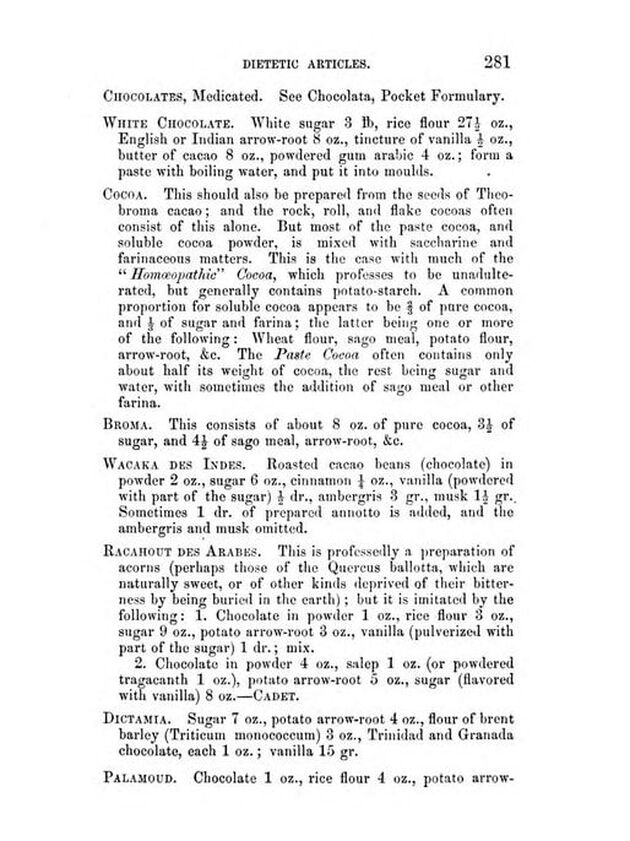 A recipe for white chocolate calling for rice flour, cocoa butter, and gum arabic. From "The Druggist's General Receipt Book: Containing a Copious Veterinary Formulary : Numerous Recipes In Patent And Proprietary Medicines, Druggists' Nostrums, Etc. : Perfumery And Cosmetics : Beverages, Dietetic Articles, And Condiments : Trade Chemicals, Scientific Processes, And an Appendix of Useful Tables," by Henry Blakely and published in 1871. The Druggist's General Receipt Book: Containing a Copious Veterinary Formulary : Numerous Recipes In Patent And Proprietary Medicines, Druggists' Nostrums, Etc. : Perfumery And Cosmetics : Beverages, Dietetic Articles, And Condiments : Trade Chemicals, Scientific Processes, And an Appendix of Useful Tables by Henry Blakely and published in 1871, has a white chocolate recipe very similar to the one from "A Boston Lady." A mixture of white sugar, rice flour, arrowroot powder, vanilla, cocoa butter, and gum arabic, mixed with boiling water and molded, the resulting confection was likely a chewy one. White Chocolate Caramel Tablets, 1869The Royal Cookery Book (le Livre de Cuisine) by Jules Gouffé, Alphonse Gouffé (1869) revealed this interesting recipe: White chocolate caramel tablets were probably a type of chewy caramel, although it's difficult to say, given the recipe. Boiling sugar to the "breaking point" indicates possibly hard crack stage, in which case the tablets would be more like toffee or a hard caramel candy, rather than the soft white chocolate we are used to. The Broma Process, 1865Invented around 1865 by a worker at the Ghirardelli Chocolate Company, the broma process involves placing roasted cocoa beans in a bag just above room temperature to allow the cocoa butter to drip out. The remaining cocoa beans could then be processed into cocoa powder. But what to do the with cocoa butter? Much of it was processed back into bar chocolate, making it richer than 100% cacao. But I think the surplus of cocoa butter from the cocoa powder process meant that people were more interested in trying out different types of chocolate, like white chocolate. The timeline certainly matches the above findings of pre-1930s white chocolate. The Zero Bar, 1920One last candy was niggling at the back of my head - the Zero Bar, first introduced in around 1920 as the "Double Zero Bar" by the Hollywood Brands company, based in Minneapolis, MN. In 1934 the name was changed to "Zero Bar" and the wrappers have always brought to mind chilly temperatures, which was by design. A caramel nougat with almonds and enrobed in white fudge, this candy bar appears to be one of the earliest commercial applications of white chocolate. Today, the Zero Bar is still manufactured by the Hershey Company, although it can be difficult to find in stores. White Chocolate ConclusionsWhen all is said and done, Nestle still appears to be the first company to market solid white chocolate on a commercial scale, although the Zero Bar clearly predates the Milkybar/Galak by over ten years and the Alpine White (first introduced in 1948) by nearly twenty. I personally enjoy white chocolate, and the Zero bar was a childhood favorite of mine, although I know many people think white chocolate is inferior to the kind including the whole bean. But I'm not sure I enjoy it quite as much as these Alpine White television commercials would have us believe. Do you like white chocolate? Do you have a favorite candy bar? Let me know in the comments! The Food Historian blog is supported by patrons on Patreon! Join us for awesome members-only content like free digitized cookbooks from my personal collection, e-newsletter, and even snail mail from time to time!
Thanks to everyone who joined us for Episode 22 of the Food History Happy Hour! This was a very special Halloween themed episode! We made the early 19th century Stone Fence cocktail, and talked about all sorts of historic Halloween traditions and foods, including the Celtic and Catholic origins of Halloween, Halloween games and divination, including Snap Apple (as illustrated above), donuts, party foods including gingerbread, grapes and grape juice, apples, pumpkins, color themed parties, decorations, including Dennison's Bogie Books, the history of trick-or-treating, and more!
Stone Fence Cocktail (19th Century - 1946)
There's all kinds of versions of this - I was first introduced to the Stone Fence in the Roving Bartender (1946), and of course it's in Jerry Thomas' "How to Make Mixed Drinks" (1862) also has a version, which is largely how it gets popularized in bars across the country. But mixing hard cider with brown liquor dates to much earlier, and the type of brown liquor depends on the region. Both of these recipes call for Whiskey/Bourbon, but I decided to go with spiced rum. Other versions also call for Angostura bitters or cinnamon, which is unnecessary if you use spiced rum, like I did.
You'll note that the Jerry Thomas recipe actually calls for the use of sweet cider, which is unusual. Here's the original recipe:
(209) Stone Fence. (use a large bar glass) 1 wine glass of whickey (bourbon). 2 or 3 small lumps of ice. Fill up the glass with sweet cider.
I like the Bill Kelly recipe from the Roving Bartender a bit better. Here's the original:
Stone Fence. 1 oz. whiskey in a high ball glass Fill with hard cider. And of course, there's my own version! 1 oz. spiced rum Fill with hard cider (I used Strongbow Artisanal Blend) I did not use ice, because I was lazy, but if you don't make sure your hard cider is chilled for the best version. You could also turn this into a sort of flip by heating the hard cider (don't boil unless you want to lose the fizz and the alcohol content) and adding the spiced rum at the last minute. Episode Links
I love Halloween and had a bunch of fun putting this together.
That's all for tonight! I hope everyone has a very Happy Halloween tomorrow and we'll see you in November for the next episode of Food History Happy Hour!
Food History Happy Hour is supported by patrons on Patreon! Join us for awesome members-only content like free digitized cookbooks from my personal collection, e-newsletter, and even snail mail (like the Halloween packet) from time to time!
You may have seen this meme floating around the interwebs lately. You know the familiar, often hard, taffy wrapped in black and orange waxed paper. 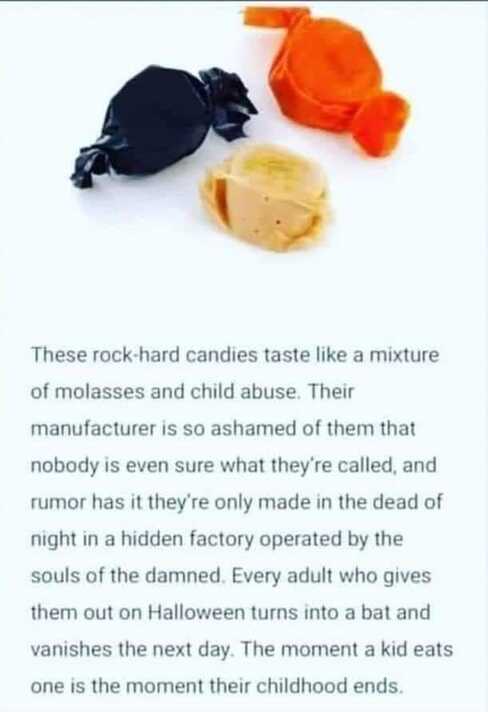 The meme reads "These rock-hard candies taste like a mixture of molasses and child abuse. Their manufacturer is so ashamed of them that nobody is even sure what they're called, and rumor has it they're only made in the dead of night in a hidden factory operated by the souls of the damned. Every adult who gives them out turns into a bat and vanishes the next day. The moment a kid eats one is the moment their childhood ends." Well, I hate to burst the meme-maker's bubble, but these candies DO have a name - Mary Jane Peanut Butter Kisses - and a rather long and storied history. The oft-maligned candies are a molasses taffy stuffed with a bit of peanut butter. And there are two versions, actually - the original Mary Janes, which were rectangular; and the Mary Janes Peanut Butter Kisses - the more familiar, roundish shape that resembles salt water taffy. Originally invented in 1914 by the Charles. N. Miller Candy Company, Mary Janes were supposedly named after his aunt, but the mascot was - and still is - a precocious little girl. Charles H. Miller opened a confectionary shop in Boston, MA in 1884. His son, Charles N. Miller, was the one who invented Mary Janes - a molasses taffy made just at the soft ball stage, with peanut butter folded in the center. Molasses taffy dates back to the mid-19th century. Molasses is boiled until thickened, then when partially cool, it is pulled to incorporate air into the cooked sugar mixture and give it lightness and chew. Mary Janes are softer than many types of taffy, in part because the cooking process is halted earlier. Peanut butter was also being popularized at the turn of the 20th century, and many Halloween candies from that era incorporate peanut butter into the mix. At some point, the small rectangular candies wrapped in an iconic yellow and red printed paper were succeeded by the "kisses" - the rough rounds wrapped in black or orange waxed paper. It's unclear whether the black and orange wrappers were to part of a marketing scheme to associate the candies with Halloween, or if they became associated with Halloween because of the wrappers. Either way, they are a staple old-time candy that still finds its way into candy jars and trick-or-treat bags from time to time. Some of their endurance is likely because they are so inexpensive. Even in the period, they were inexpensive, and one of the advertising slogans the Charles H. Miller Company came up with was, "spend your change on Mary Janes." They're still sold in "penny candy" stores today. Wrapped in waxed paper, both the original Mary Janes and the Peanut Butter Kisses do tend to dry out and harden after a time, which is probably what makes them the bane of childhood. Mary Janes were in danger of disappearing from store shelves on several occasions. In 1989, Miller's was sold to Stark's Candy Company, which in turn was acquired by Necco (New England Candy Company) in 1990. Throughout the mid-2000s, Necco underwent a series of sales to various investment firms until it finally declared bankruptcy in 2018. It was purchased by the Spangler Candy Company (famous for Dum-Dums, candy canes, and Circus Peanuts) and the rights to produce Mary Janes was licensed to the Atkinson's Candy Company in 2019. Located in Texas, Atkinson's is most famous for "Chick-o-Stick" candy, and makes a variety of other, old-fashioned, peanut-butter-based and taffy candies including Peanut Butter Bars (a type of peanut brittle layered with peanut butter which I adore) and Slo Poke. The history of Mary Janes reads like a miniature summary of candy company history in general - old, family companies are "gobbled" up by larger ones. But some of the originals, including Spangler, which was founded in 1904, and Atkinson's, which was founded in 1932, seem to hang on. Nostalgia likely plays a leading role in their continued success, as does the inexpensive nature of their offerings. You'll notice that neither company has much in the way of chocolate (which is more perishable and difficult to work than pure sugar) as part of their offerings. Hard candies, caramels, and chewy taffy-based treats are the name of the game. As for whether or not Mary Janes constitute child abuse? Perhaps if all you've ever had were hard, stale ones, you might agree. But now that Atkinson's is producing them again, I encourage you to buy yourself a fresh bag and give them a try. And if you really can't stomach them and end up with a bag you're loathe to throw away, you can always turn them into a peanut buttery caramel sauce. What do you think? Do you have a favorite candy that other people hate? Tell us in the comments! The Food Historian blog is supported by patrons on Patreon! Join us for awesome members-only content like free digitized cookbooks from my personal collection, e-newsletter, and even snail mail from time to time! |
AuthorSarah Wassberg Johnson has an MA in Public History from the University at Albany and studies early 20th century food history. Archives
July 2024
Categories
All
|
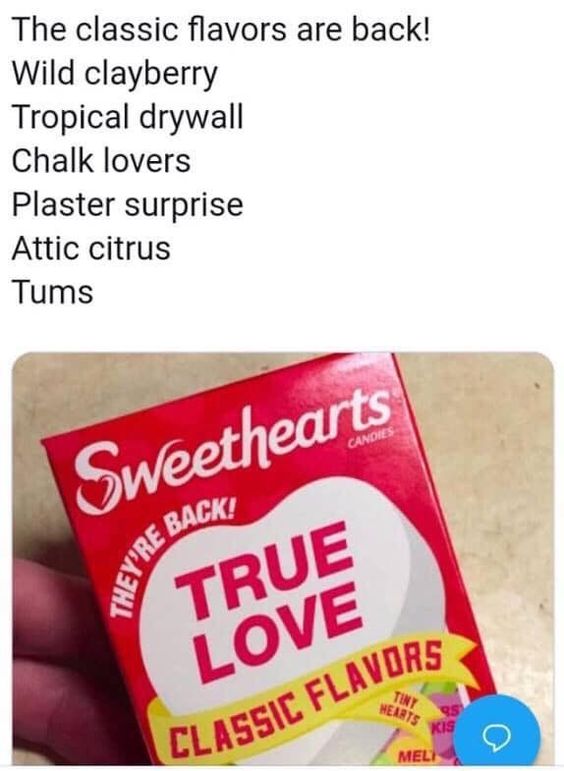
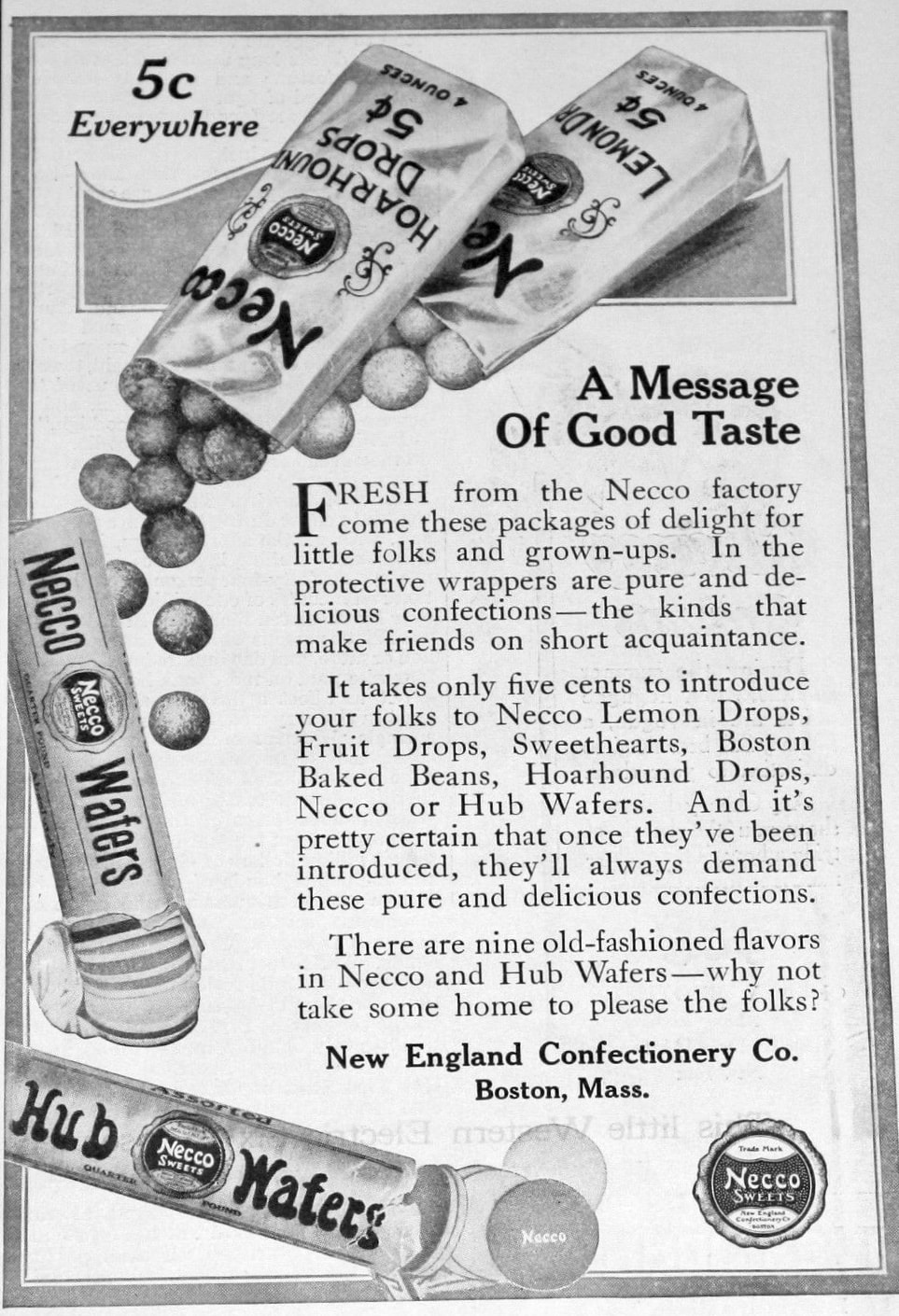
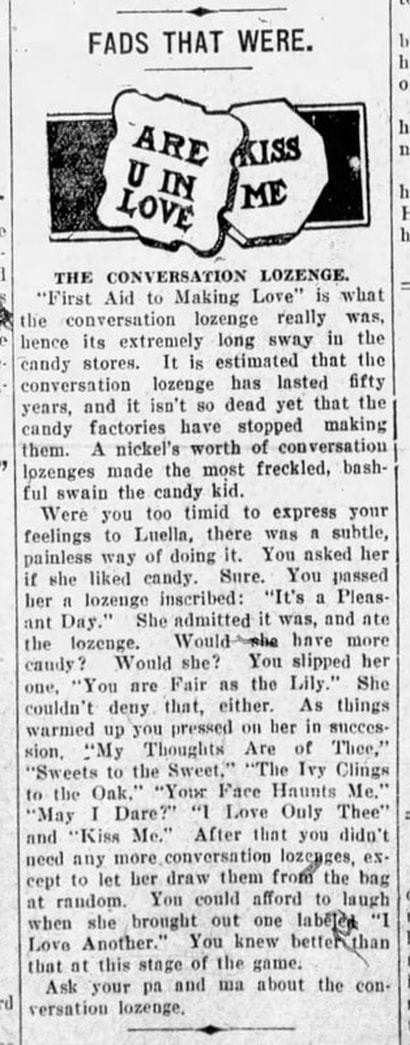
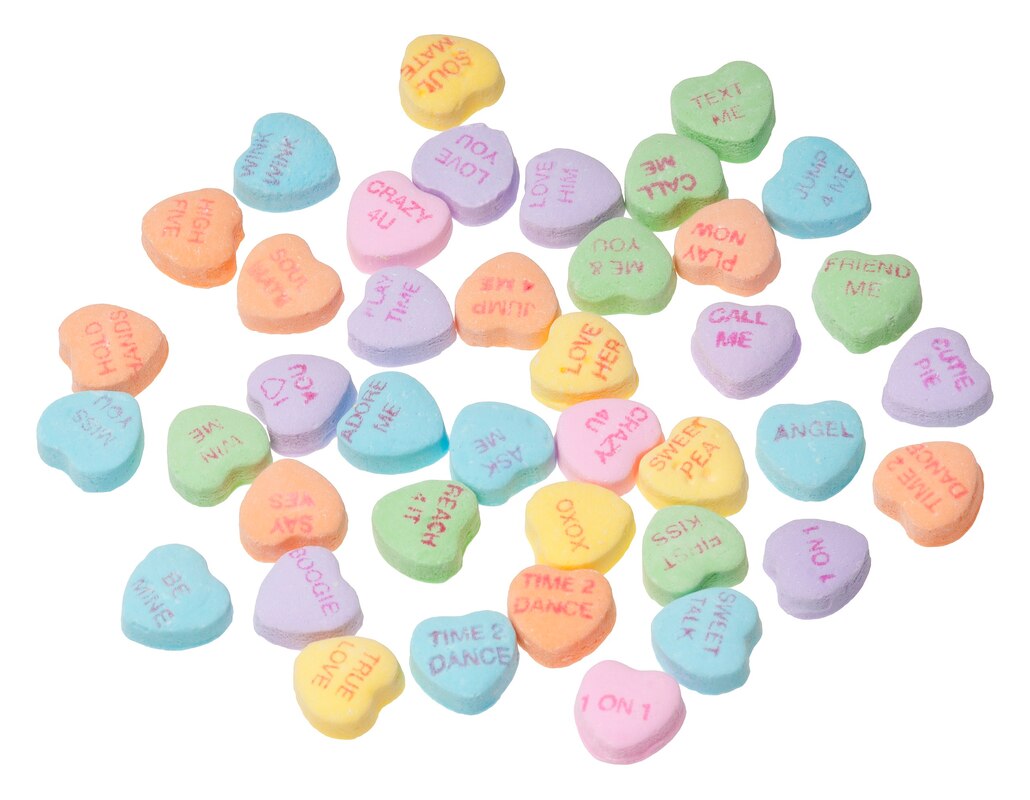
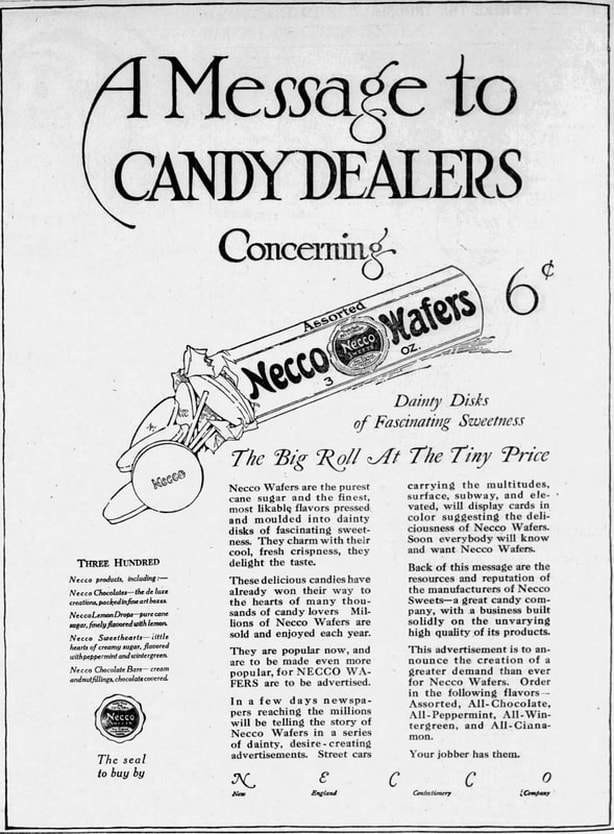
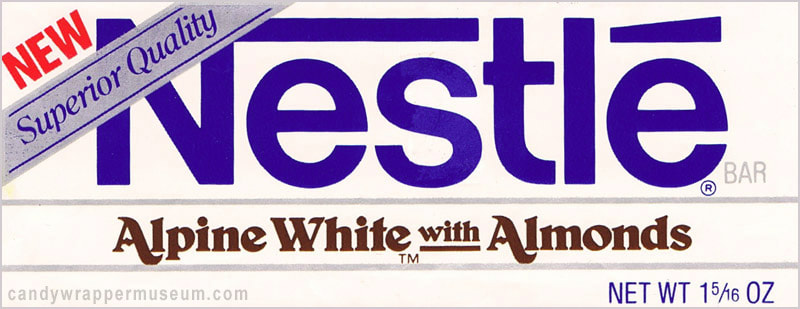
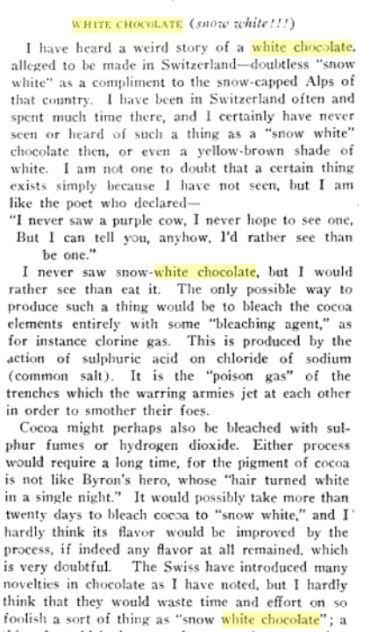
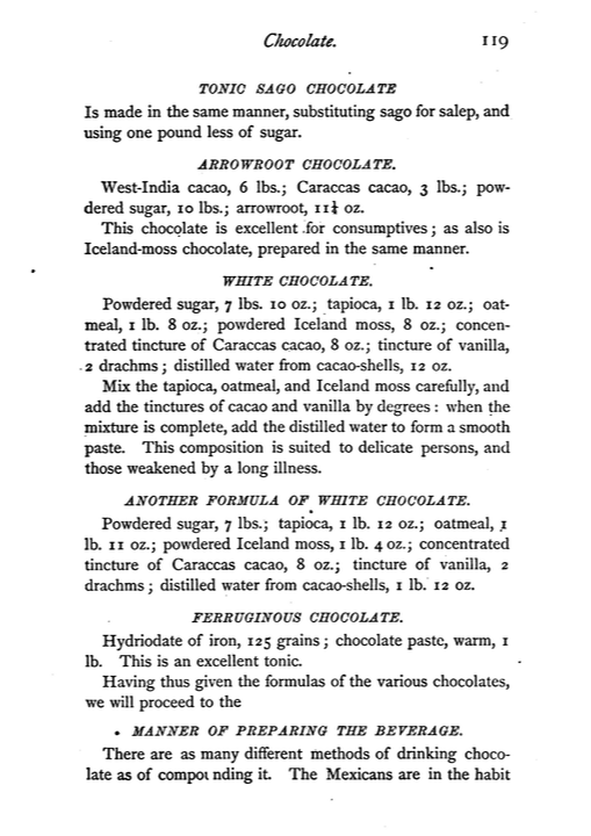
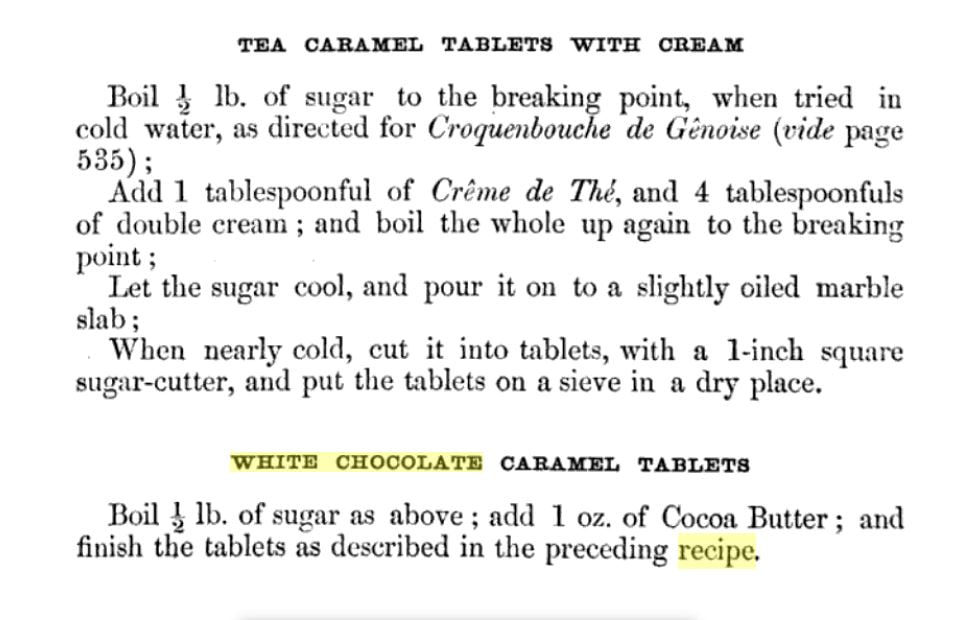
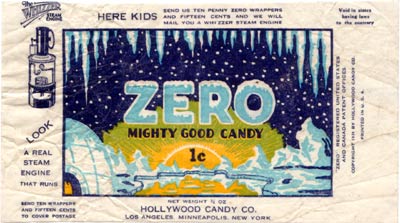


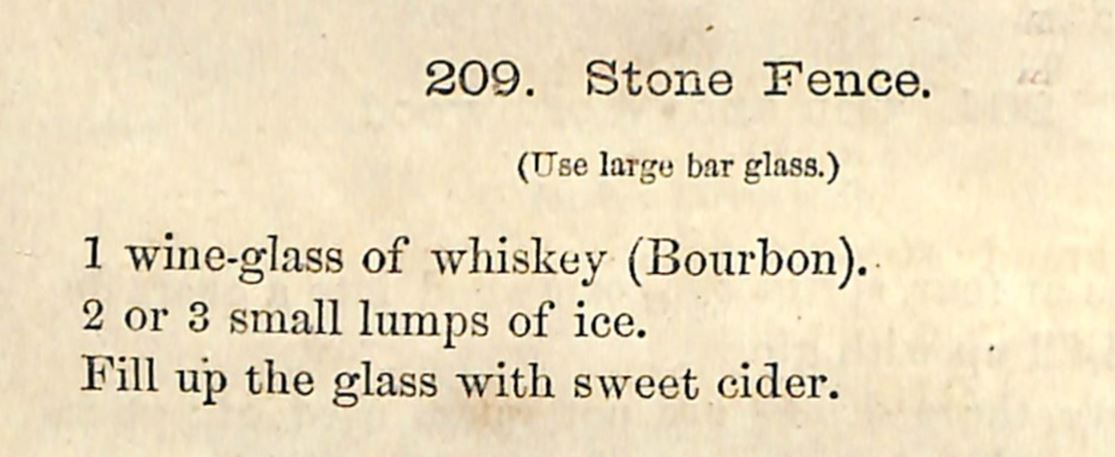

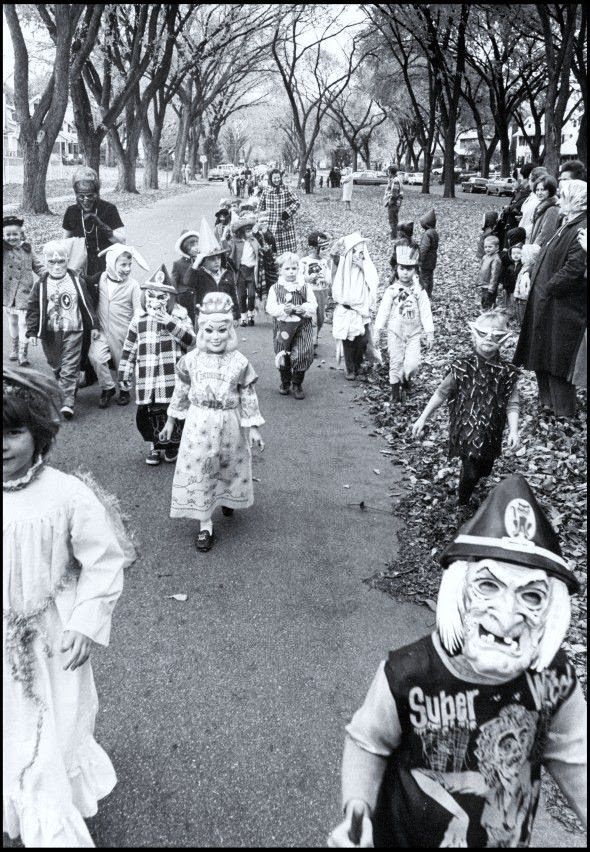
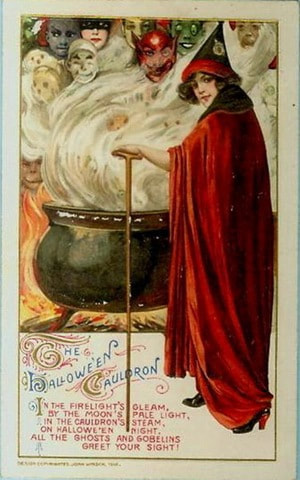

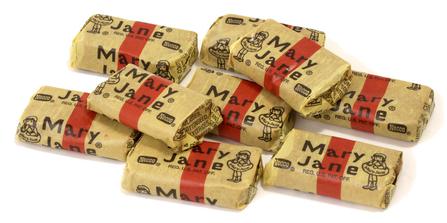

 RSS Feed
RSS Feed